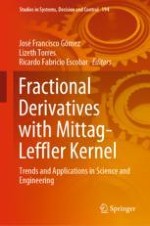2019 | Buch
Fractional Derivatives with Mittag-Leffler Kernel
Trends and Applications in Science and Engineering
herausgegeben von: Prof. José Francisco Gómez, Dr. Lizeth Torres, Prof. Ricardo Fabricio Escobar
Verlag: Springer International Publishing
Buchreihe : Studies in Systems, Decision and Control
